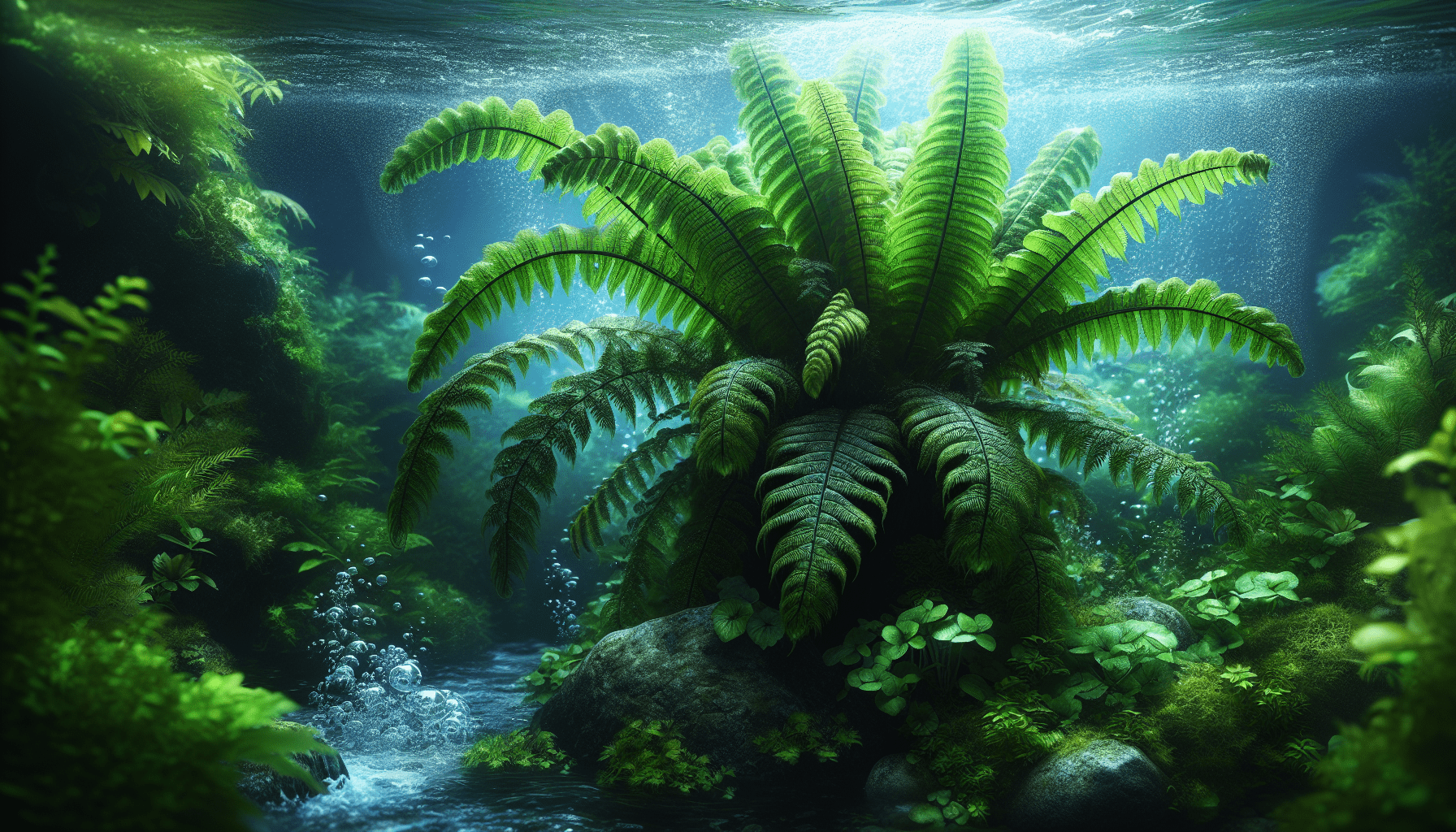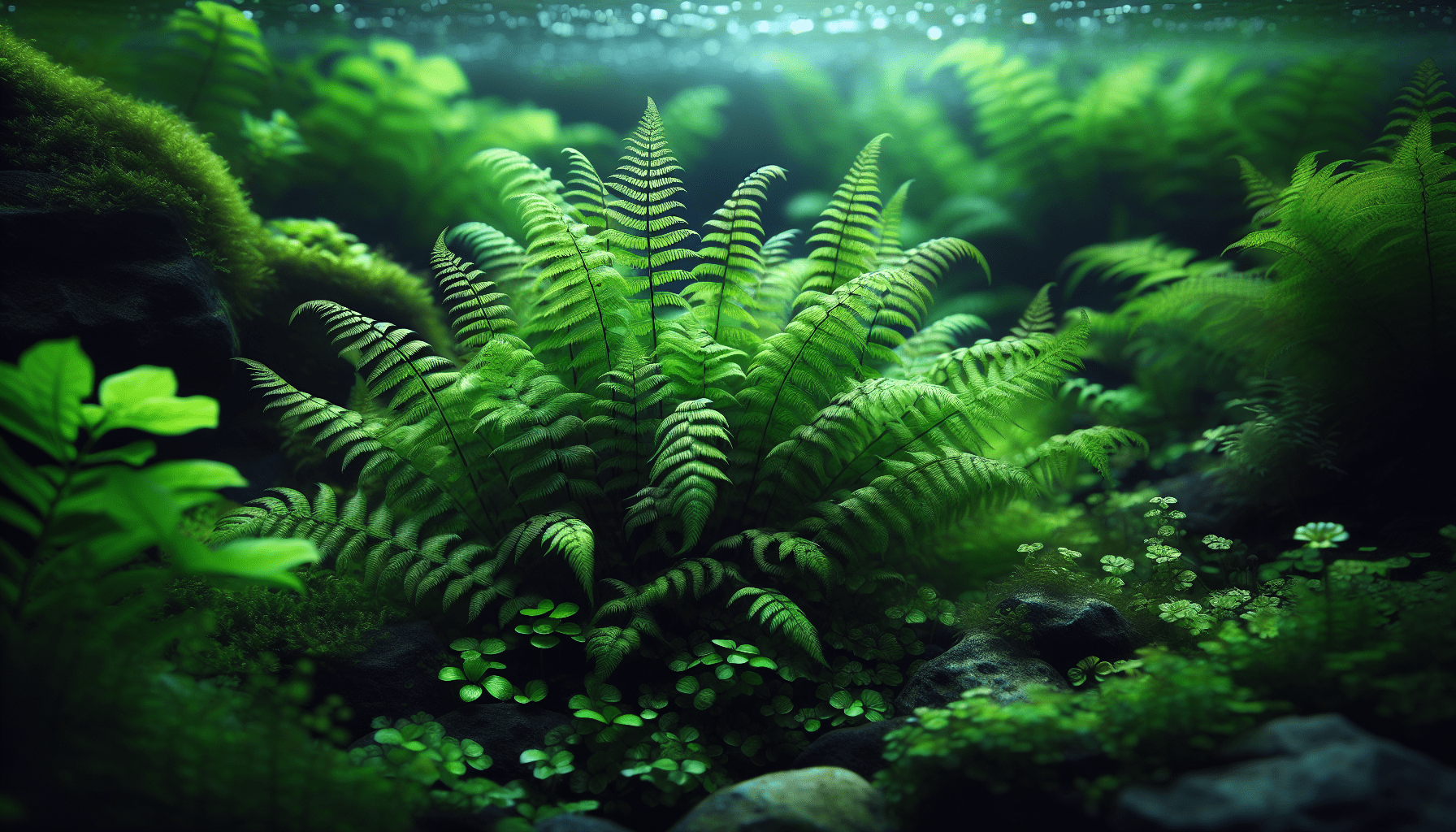In the vast and varied world of aquatics, an exceptional specimen often stands out—Bolbitis Heudelotii. This is a fern-like aquatic weed cherished by water gardeners, aquarium enthusiasts, and marine biologists alike. Upon deeper exploration of Bolbitis Heudelotii, you will find it possesses verdant leafy fronds that serve as an aesthetically pleasing and beneficial addition to aquatic ecosystems. The following article embarks on a comprehensive exploration of this aquatic weed, tracing its origins, understanding its habitat needs, reflecting on its reproductive cycle, and elaborating on its role in freshwater habitats.

Botanical Description of Bolbitis Heudelotii
Bolbitis Heudelotii, commonly referred to as the African Water Fern, is a semi-aquatic, evergreen fern noted for its delicate and lush appearance. Known for its ability to thrive in a range of aquatic environments, this fern-like plant is widely coveted as a decorative element in aquarium landscapes.
Physical Features and Appearance
The unmistakable beauty of Bolbitis Heudelotii lies in its unique physical characteristics. As a pinnate fern, its fronds consist of opposite pairs of leaflets or pinnae, giving it a feather-like appearance. The leaves exhibit a dark green to black hue and are transparently thin, exuding an ethereal quality when submerged underwater.
Distinctive Characteristics
One of the most distinctive features of Bolbitis Heudelotii is its ability to grow submerged or emersed. Unlike terrestrial plants, it extracts nutrients directly from the water, doing away with the need for a nutrient-rich substrate. As a rhizomatous plant, its elongated, creeping rhizomes are another defining characteristic, which anchor the plant onto substrates like rocks, driftwood, or other surfaces.
Typical Size Range
Typically, Bolbitis Heudelotii reaches about 15-40 cm high and 10-15 cm wide in optimal conditions. However, the size may vary depending on conditions like light intensity, nutrient availability, and water conditions.
Scientific Classification of Bolbitis Heudelotii
The scientific classification of Bolbitis Heudelotii falls into the following categories:
Kingdom And Phylum
Bolbitis Heudelotii belongs to the Plantae kingdom and the Pteridophyta phylum, which includes all vascular plants that reproduce through spores, such as ferns and horsetails.
Class and Order
It falls under the class Polypodiopsida, also known as the true fern class, and the order Polypodiales, which houses the majority of fern species.
Genus and Species
The plant belongs to the Bolbitis genus, a relatively small genus of approximately 80 to 100 species of ferns. The specific epithet Heudelotii is a nod to its discoverer, French botanist Jean-Pierre Lequément (1802–1837).
Distribution and Habitat
Bolbitis Heudelotii has a wide range of distribution and a natural propensity for diverse habitats.
Geographical Distribution
Bolbitis Heudelotii is native to Africa, particularly the regions near the Central African west coast. However, its popularity as an aquatic plant has promoted its distribution in diverse aquatic habitats worldwide.
Preferred Natural Habitats
This African Water Fern typically flourishes in the dimly lit underpinnings of jungles and forests. It prefers slow-moving streams, rivers, and marshes, where it can anchor its rhizomes to rocks, fallen trees, or riverbanks.
Environment and Conditions
Being an aquatic fern, Bolbitis Heudelotii thrives in a high-humidity environment. It prefers subtropical to tropical climates with moderate temperatures ranging from 68°F to 82°F. Lower temperatures might retard its growth, while higher temperatures could lead to its demise. Albeit adaptable, it tends to do better in slightly acidic to neutral pH conditions (pH 6-7).
Plant Propagation and Growth
Bolbitis Heudelotii’s growth and propagation mechanisms entail the following:
Reproduction Mechanisms
Reproduction of Bolbitis Heudelotii takes place through spores, like other ferns. However, it can also propagate through vegetative means using its rhizomes.
Factors Affecting Growth
Bolbitis Heudelotii’s growth can be influenced by numerous factors such as light, nutrients, temperature, and water conditions. This fern is a slow-growing plant under low light conditions. However, in well-lit conditions and with adequate nutrients, it can gain significant growth.
Growth Rate And Maturity
With good conditions, Bolbitis Heudelotii can reach maturity in one year. Mature fronds may bear sporangia, minute structures that house the spores for reproduction.

Roles and Benefits of Bolbitis Heudelotii in Aquatic Ecosystems
Bolbitis Heudelotii plays a crucial role in aquatic ecosystems.
Oxygen Production and Nutrient Regulation
As a photosynthetic plant, it releases oxygen into the water and absorbs carbon dioxide and other nutrients, aiding in maintaining nutrient balance in the ecosystem.
Habitat Provision for Aquatic Life
Its dense growth provides a safe and nurturing habitat for numerous aquatic species, acting as a sanctuary for fry and smaller fish.
Contribution to Biodiversity
By providing a niche for various plants and animals, it contributes to the overall biodiversity of the ecosystem.
Natural Filtering Mechanism
Bolbitis Heudelotii acts as a natural filter in aquatic ecosystems, removing pollutants and improving water quality.
Challenges of Bolbitis Heudelotii
Despite its ecological importance, Bolbitis Heudelotii can pose challenges.
Potential Invasiveness
Owing to its reproductive prowess, Bolbitis Heudelotii can potentially invade and cause ecological imbalance in non-native habitats.
Impact on Other Aquatic Species
In an enclosed environment like aquariums, overgrown Bolbitis Heudelotii can overshadow other aquatic species, thereby inhibiting their growth.
Management and Control Methods
Constant management is required to keep its growth in check. This can include frequent pruning, regular surveillance, and occasionally, usage of herbicides.
Cultivation and Care for Bolbitis Heudelotii in Aquariums
If you are considering including Bolbitis Heudelotii in your aquarium, understand its unique care requirements.
Planting Techniques
Bolbitis Heudelotii should be attached to hard substrates like rocks, driftwood using fishing lines or special aquarium glues. As a rhizomatous plant, it should never be buried in the aquarium substrate as it can cause the rhizomes to rot.
Water Conditions and Requirements
Moderate to strong water flow, consistent water temperature, and slightly acidic to neutral pH conditions are ideal for Bolbitis Heudelotii.
Lighting and Temperature Requirements
Although the plant can survive in low-lit conditions, moderate to high lights promote optimal growth. A temperature range of 68-82°F should be maintained.
Pruning and Maintenance of Bolbitis Heudelotii
Regular pruning and maintenance tasks keep Bolbitis Heudelotii healthy and aesthetically pleasing.
When and How to Prune
Pruning should be undertaken when the plant shows signs of overgrowth. The most effective way to prune it is by neatly trimming its fronds closer to the rhizome.
Maintaining Optimal Health and Appearance
Ensure it gets enough nutrients, particularly iron and carbon dioxide, for optimal health and vibrant color.
Dealing with Diseases and Pests
Bolbitis Heudelotii isn’t generally susceptible to pests or diseases. However, look out for signs of health problems like yellowing or wilting leaves.
Common Varieties and Relatives of Bolbitis Heudelotii
The Bolbitis genus houses several varieties and close relatives of Heudelotii.
Diverse Varieties and Their Features
Varieties may differ in aspects like size, frond shape, leaf thickness, color, and optimal growth conditions.
Closely Related Species
Closely related species include Bolbitis heteroclita, Bolbitis difformis, and Bolbitis asiatica, each with its distinct features and care requirements.
Choosing the Right Variety for Your Aquarium
Choose a variety or species considering your aquarium’s size, lighting, temperature, and aesthetic appeal.
Buying and Selling Bolbitis Heudelotii
Acquiring Bolbitis Heudelotii entails sourcing it from a trusted seller.
Where to Purchase
Aquarium stores, plant nurseries, and online plant retailers are ideal destinations for purchasing Bolbitis Heudelotii.
Expected Price Ranges
Prices may vary depending on factors like size, health, and rarity of the plant. Generally, expect to pay between $5-$15 per plant.
Checking for Plant Health Before Purchase
Ensure you purchase healthy plants. Look for vibrant color, robust form, and absence of damage or disease signs.
Bolbitis Heudelotii, with its distinctive physical features and myriad roles in aquatic ecosystems, remains a popular choice for aquarium hobbyists and aquatic ecosystem enthusiasts. Its success as an aquarium plant testifies to its adaptability and relative ease of care, offering many opportunities for observers and caretakers to explore the fascinating world of aquatic botany.